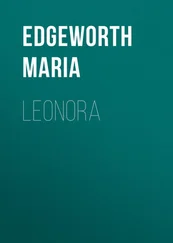‘The answer is the nail I have inside me called Max.’
Remedios introduces her to every type of edible insect starting with the caterpillars that live in the maguey and nopal cacti. She is familiar with them through recording them in such minute detail, and Leonora appreciates her gift as a miniaturist.
The pair of them are certain that nature heals, and that spells either offer cures for the soul or else precipitate it into the inferno, so it seems entirely normal to have recourse to herbalists and traditional healers.
‘Sometimes I wish that my brains could be taken out, just to stop me thinking on and on about Santander,’ Leonora tells her, and Remedios gives her a tea made with lemon balm, a recipe for oblivion.
Remedios knows how to barter.
‘How much is it?’
‘Fifteen.’
‘Ten.’
The seller ends up giving it to her for whatever she offers. She is always called either ‘little miss’ or ‘young girl’, something which rejuvenates the two of them.
‘Wouldn’t you like this burrito , so well-trained and obliging?’
Leonora would happily buy a donkey a thousand times over, but Remedios interjects before she can:
‘Not just yet. I need to check with my husband first.’
Leonora laughs aloud.
‘Don’t laugh. Benjamin knows how to do twenty thousand different things, and he still misses Le Petit Parisien .’
Walking about among so many warm and shy stallholders at once stimulates them.
Remedios reads widely and talks about Alexandre Dumas, Jules Verne, Edgar Allan Poe, Aldous Huxley and Antoine de Saint-Exupéry.
‘Do you know what? I am writing a novel called Lady Miracle. ’
She reads it aloud to Leonora, who has already published two books of short stories. The two of them undertake a ‘cleansing’ with the healer called Pachita, who brushes them from top to toe with pirul leaves, rue and lemon. Remedios brings her an egg and Leonora, certain of her friend’s perfection, is horrified when the black caterpillar of death emerges from the shell.
‘Both you and Kati have changed my life in Mexico, Remedios. My anguish has vanished and I hardly suffer from those horrible recurrent memories any more.’
They put their friendship to simmer over a slow flame in a Celtic cauldron:
‘We are the fox and the Little Prince. “It’s the time that you spent on your rose that makes your rose so important”,’ Remedios, who knows The Little Prince by heart, assures her.
‘What I like best about the book is the boa constrictor who swallowed the elephant,’ Leonora replies.
‘It is said that Saint-Exupéry was inspired to draw it by an island off Patagonia he saw from his plane.’
In the kitchen at her dilapidated flat on the Calle Gabino Barreda, they prepare delicious syrups and cordials. When they are together they have no need of anyone else. Remedios writes letters to imaginary psychiatrists, and Leonora laughs in surprise at her friend’s ingenuity.
‘I have just finished writing another letter to my psychiatrist, Justo Locatelli.’
Leonora confides in Kati over her horror at Renato’s world: a world of politicians, bullfighters, journalists, drunkenness, riotous behaviour and bullets in the cantina…
‘Yet Renato himself is not altogether abominable, is he?’ Kati asks.
‘No. He himself is a truly good man.’
The Englishwoman responds at once to the atmosphere in both Remedios’ and Kati’s houses. She is convinced that Remedios, their older sister, is in possession of an absolute truth, a secret that will change both their lives. When she bids them farewell she says: ‘I am now going to put on my cape of bats,’ and Remedios holds it out to her, or occasionally has cause to remind her: ‘You have forgotten to put on your cape of bats!’
‘What is your lucky number?’
‘Number seven.’
‘Mine is number eight,’ Remedios smiles. ‘Are you familiar with the law of octaves? Our vibrations coincide with one another.’
The two women artists read books on alchemy, a topic that has always fascinated Leonora, and read the tarot. They see in the arcana how their passions, desires and a common history are aligned.
‘Do you know the tarot painted by Brauner, Herold, Max, Masson and Lam? The arcana are Paracelsus, Hegel, Lamiel, Novalis, Freud, Baudelaire, Alicia, Ubu, Lautréamont, Helen Smith and Pancho Villa.’
Leonora paints to suit herself, and Remedios illustrates catalogues for the Bayer drugs company. If she and Remedios ever fall out, Kati is always on hand to be their conciliator.
On the street corner, the street-sellers set out their herbs, chameleons, sea shells and little packages labelled ‘sexual debility’, ‘arthritis’, ‘bile’, ‘indigestion’, ‘eye strain’, all greatly in demand by healers, spiritualists, bone doctors, all of whom know so much more than doctors. Remedios prefers taking a fennel tea to taking a pill. In Mexico miracles, just like idols, appear from under every stone. Each time a site is excavated, urns and masks materialise which Hernán Cortés and his army attempted to destroy and which today are regarded as treasures.
‘What is this?’ Leonora asks in surprise.
‘It is a jade mask. Jade was especially highly valued, a sacred stone par excellence, ’ Péret answers.
‘It is not the only stone of its kind,’ Wolfgang Paalen adds, ‘there’s also the chalchihuitl , a word that means “precious stone that illuminates”, and it is round and brilliant. The Olmecs placed it inside the mouths of the dead to light up their path into the underworld. The Chinese, too, used to carve jade cigars to place between the lips of their dead.’
That the earth can at any moment expel the remains of an extraordinary culture moves Leonora. In contrast, Mexican religiosity astounds her: they cross themselves with the first coin of the day they receive, drink moonshine at the foot of the altar and cut or lash themselves until they bleed on Good Friday. On even the smallest village square stands a church that swallows up any passers-by. On the second of November, All Souls Day, Remedios buys Leonora a sugar skull with her name iced on the forehead; except that she had to add the final ‘a’ with a pen, because he could only find one reading Leonor.
‘That’s what Doctor Morales used to call me when I was in Santander.’
As soon as Renato departs to his newspaper office, Leonora rushes round to the Calle Gabino Barreda. She had already met Remedios in Paris with Esteban Francés, her husband at the time, and before then when she used to live with Gerardo Lizarraga. Now she is with Benjamin Péret.
‘In Paris, I found the group of Surrealists so intimidating; it was why I hardly ever went near the Café de Flore,’ explains Remedios, who encourages Leonora to play all kinds of Surrealist games.
Ever since she left the clinic in Santander, Leonora has learnt to keep herself at a distance, but Remedios succeeds in piercing her armour. Scarcely does she set foot in the flat before her sense of security is restored. Remedios supports her, protects her, comprehends her. She has never had such a close friend.
‘I only really feel good when I am with you. It’s a huge relief.’
‘How good that Doctor Mabille came to Mexico! He has been asking after you and hopes to see you,’ Alice Rahon relays to her.
To his great friend André Breton, the French doctor is an exceptional Surrealist. He seems to wear his white coat even outside his consulting rooms. His essay on the importance of the mirror in human psychology was published in the magazine Minotaur and caused a big commotion inside the group. In it, he maintained that man recognises his ‘I’ in his mirror image. Reading The Oval Lady while he was in Paris inspired him to write that Leonora was a marvellous personality and that ever since she had set foot inside the Rue Fontaine looking ‘slim, with her dark hair, heavy eyebrows, eyes burning with a unique fire’, she dazzled him. ‘She reminds me of those legendary Scottish princesses, beings of immense lightness who escape across medieval castle roofs to gallop off on wild white horses, only in order to vanish around a bend in the track over the moor …’
Читать дальше












